Create successful ePaper yourself
Turn your PDF publications into a flip-book with our unique Google optimized e-Paper software.
<strong>MTU</strong> Brown <strong>MTU</strong> Brown<br />
0-17-28-62 80% der Farbe 60%<br />
CMYK CMYK CMYK<br />
<strong>MTU</strong> Blue <strong>MTU</strong> Blue<br />
60%<br />
50-25-0-10 80% der Farbe<br />
CMYK<br />
CMYK CMYK<br />
40%<br />
CMYK<br />
40%<br />
CMYK<br />
20%<br />
CMYK<br />
20%<br />
CMYK<br />
Marine<br />
The Finnish Navy has placed an order for three new minehunters at a cost of €250 million. <strong>MTU</strong> is supplying engines for them which have had their magnetic signatures<br />
removed by a complicated process. That makes them undetectable by sea mines.<br />
very weak residual signature that will be easily<br />
counteracted by the onboard coil systems.<br />
Quiet, inconspicuous and non-magnetic<br />
And that means the engine is ready for duty on<br />
the Finnish minehunter Katanpää. She is due to<br />
enter service in 2015 and start clearing mines<br />
from the coastal areas of the Finnish Baltic<br />
along with her sister ships, the Vahterpää and<br />
Purunpää. Commandant Heikki Vierelä is already<br />
preparing himself and his crew for the mission.<br />
To begin with, his new ship will only operate in<br />
the Baltic, though he intimates that international<br />
missions are envisaged in five to ten years’<br />
time. “Here in the Baltic Sea off the Finnish<br />
coast all the mines date from the Second World<br />
War. But in asymmetrical warfare, mines are a<br />
favored means of blockading port entrances, for<br />
example,” he explained. Using special sensors on<br />
the ship, he and his crew locate the mines then<br />
defuse or detonate them. The <strong>MTU</strong> propulsion<br />
engines paired with Voith-Schneider propellers<br />
enable the crew to maneuver the vessel very<br />
precisely even in heavy seas and high winds<br />
because that combination allows the thrust to<br />
be infinitely varied without changing the engine<br />
speed. And with the help of the Callosum ship<br />
automation system, they can concentrate fully<br />
on the job in hand. The system controls and<br />
monitors not only the propulsion plant but<br />
also the <strong>MTU</strong> on-board power supply, the fire<br />
alarm system and the tank measuring system.<br />
“However, the most important requirement<br />
of the engines is that they are reliable,” the<br />
Commandant adds. They too should simply be<br />
there, unnoticed and taken for granted. Quiet,<br />
inconspicuous and – above all – non-magnetic.<br />
Words: Lucie Maluck<br />
Pictures: Robert Hack, Martin Roscher,<br />
Freddy Philips<br />
To find out more, contact:<br />
Martin Roscher<br />
martin.roscher@mtu-online.de<br />
Tel. +49 7541 90-2694<br />
Sweden<br />
Finland<br />
Gulf of Finland<br />
Estonia<br />
Latvia<br />
Russia<br />
<strong>MTU</strong> Report 03/12 I 57


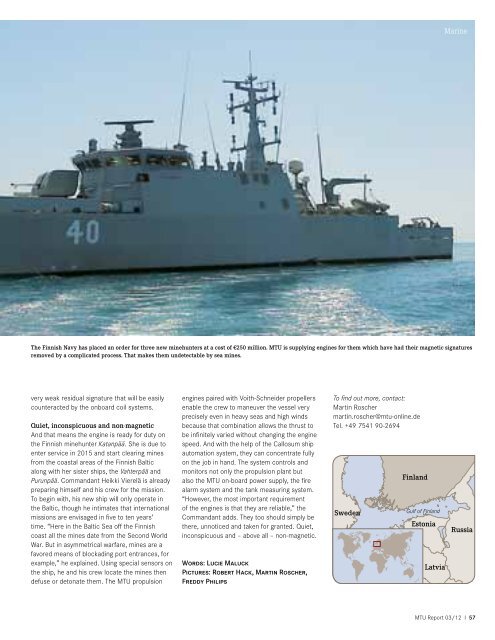



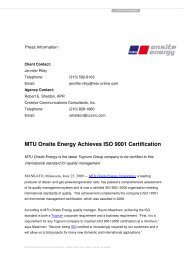

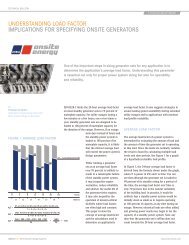


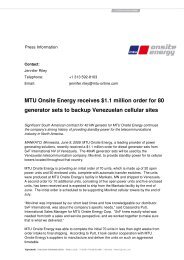

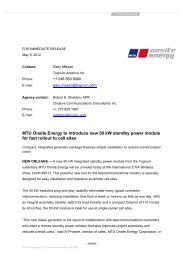

![Full power range of diesel generator sets [PDF] - MTU Onsite Energy](https://img.yumpu.com/28297693/1/190x253/full-power-range-of-diesel-generator-sets-pdf-mtu-onsite-energy.jpg?quality=85)
